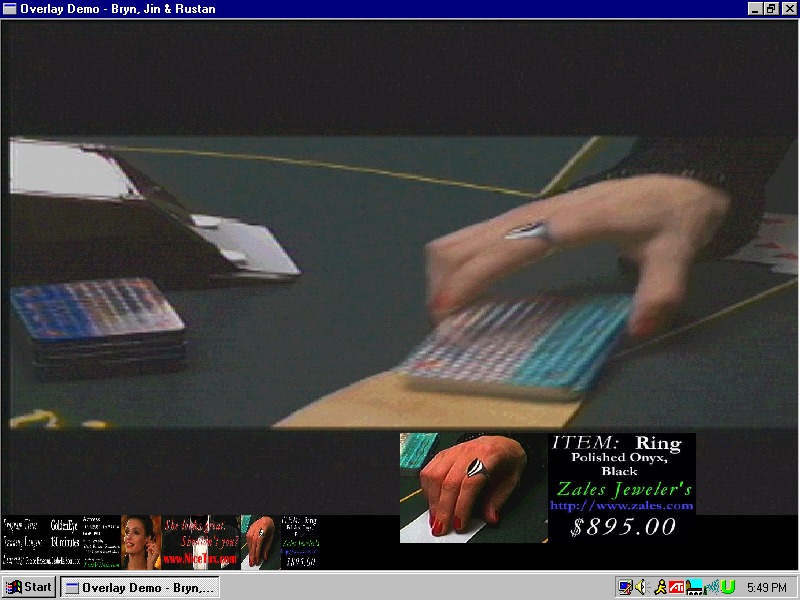 Video
Overlays and DTVML
Video
Overlays and DTVML Video
Overlays and DTVML
Video
Overlays and DTVMLOur overlays are described by a markup language similar to HTML. In addition to standard fields, each object descriptor contains a time field. This allows the specification of not only where and how objects should appear but also when. The degree to which viewers can change the visual properties of the overlays can also be specified. For example, an overlay's position and size can be either fixed or customizable by the viewer. Each overlay object as well as the markup language is sent through a separate DTV stream. The overlay receiver handles four tasks: receiving objects, parsing markup language, reacting to viewer input, and displaying the overlays. When a customizable overlay is received, an icon is displayed in a sliding window at the bottom of the display. The user can then select this overlay to show or hide it, as well as position and resize it.
An important new use of overlays is context based advertising.
In our video, we show two examples where the information for products in
a feature film is made available to the viewers at an opportune moment.
Such advertising, coupled with the Virtual VCR technology, will allow the
viewers to pause the movie, consider and possibly purchase the product,
and then enjoy the rest of the movie. Such advertising is potentially
less distracting, more enjoyable, and more appropriate that current advertisements
that completely interrupt the program. See Figure and the accompanying
video for an example of video overlays for DTV.
Last Updated: Feb. 25, 1999, slusallek@graphics.stanford.edu